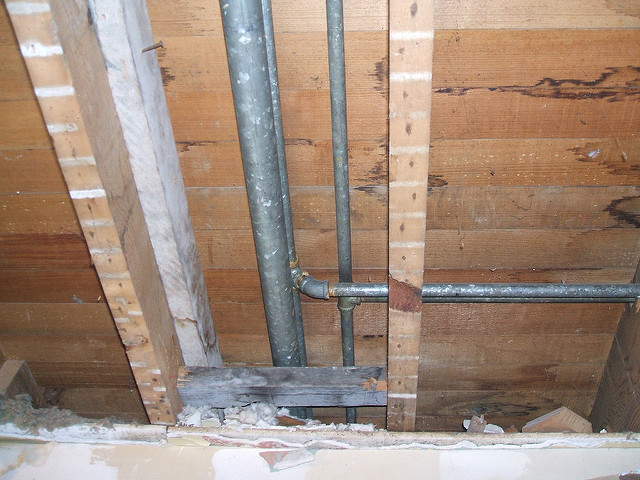Reveal Concealed Water Line Leaks: Six Tested Detection Methods
Reveal Concealed Water Line Leaks: Six Tested Detection Methods
Blog Article
Presented here down the page you can discover a lot of very good guidance related to Locating water leaks.

Early discovery of dripping water lines can minimize a prospective catastrophe. Some little water leakages might not be visible.
1. Analyze the Water Meter
Every home has a water meter. Checking it is a surefire way that helps you uncover leakages. For starters, switch off all the water resources. Make certain no one will certainly purge, make use of the tap, shower, run the cleaning machine or dishwasher. From there, go to the meter and watch if it will change. Because nobody is utilizing it, there need to be no movements. If it moves, that indicates a fast-moving leak. If you detect no changes, wait a hr or 2 and also examine back again. This means you may have a slow leak that could even be below ground.
2. Inspect Water Usage
If you find sudden adjustments, regardless of your usage being the same, it suggests that you have leakages in your plumbing system. A sudden spike in your bill indicates a fast-moving leakage.
A stable increase every month, even with the exact same habits, reveals you have a slow leak that's additionally slowly rising. Call a plumber to thoroughly examine your residential property, particularly if you really feel a warm location on your floor with piping beneath.
3. Do a Food Coloring Examination
When it comes to water consumption, 30% comes from bathrooms. If the shade somehow infiltrates your bowl throughout that time without flushing, there's a leakage between the container and bowl.
4. Asses Outside Lines
Don't fail to remember to examine your exterior water lines too. Test faucets by attaching a garden tube. Should water leak out of the link, you have a loose rubber gasket. Change this and make sure all links are tight. If you've obtained a sprinkler system, it will assist get it skillfully checked out and preserved every year. One little leak can squander tons of water as well as increase your water expense.
5. Evaluate and also Analyze the Situation
House owners should make it a practice to inspect under the sink counters and also inside cupboards for any bad odor or mold development. These 2 red flags indicate a leakage so punctual focus is called for. Doing routine evaluations, even bi-annually, can conserve you from a significant issue.
Inspect for discolorations and also compromising as many pipelines as well as appliances have a life expectations. If you think leaking water lines in your plumbing system, don't wait for it to intensify.
Early discovery of leaking water lines can minimize a possible calamity. Some tiny water leakages may not be noticeable. Examining it is a guaranteed way that aids you find leakages. One small leakage can squander tons of water and also spike your water expense.
If you suspect dripping water lines in your plumbing system, don't wait for it to intensify.
How to Know If Your Home Has a Hidden Leak
Water Meter Reveals Inexplicable Water Usage
If you’d like to test whether or not there’s a leak somewhere in your home, you can do this using your water meter. Here is how to conduct the test:
Don’t use any water in your home for at least 30 minutes; this also means not turning on faucets or water-using appliances.
Go outside, and check your water meter for activity.
If your water meter shows that there was activity, even though no one was using any water, this proves that there is a leak in your home.Visible Mold or Mildew Growth
Leaks behind walls create moist, dark environments that allow mold and mildew to grow and thrive. Eventually, you might see mold growth forming on the wall closest to a hidden leak.
If mold is growing in an area that receives a high amount of moisture, such as a bathroom, it may simply be an indication that better ventilation is needed. However, if you see mold growth on a wall or the ceiling in an area where you would not expect, you probably have a hidden leak.
Musty, Mildew Odor
Sometimes you might not be able to see the mold or mildew that is growing as a result of a leak. However, the smell can give the problem away just as easily. If you catch a whiff of something musty, there’s a good chance that old water is collecting somewhere in your home that you can’t see.
Stained/Warped Walls, Ceilings, or Floors
When your home soaks up water, a variety of red flags can become visible, including ceiling stains, bubbling drywall, warped walls, and sagging floors. While these issues can be caused by excess humidity, they can also be signs that a pipe or plumbing connection has started leaking behind your walls.
Inexplicably High Water Bill
After a while, you get a general sense for what your water bill should be. If you own a pool or sprinkler system, your bill will tend to be higher during summer. However, if you receive a water bill that seems especially high, and you can’t figure out what caused it, then you may have a hidden leak somewhere that’s increasing your bill.
https://www.plumbingjoint.com/blog/2019/july/how-to-know-if-your-home-has-a-hidden-leak/

Hopefully you enjoyed reading our article on Detecting hidden plumbing leaks. Thanks a ton for taking the time to browse our article. Appreciated our review? Please share it. Help somebody else discover it. We thank you for reading our article about Leaking water lines.
This Site Report this page